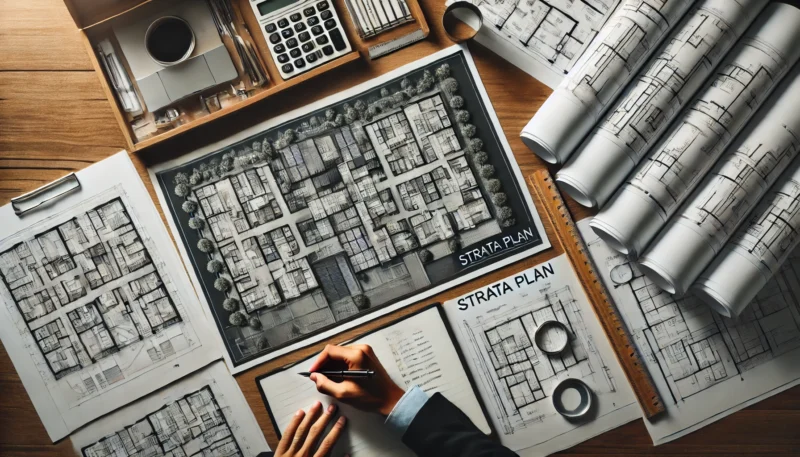In decades gone by, it was common for first-time buyers and all buyers to purchase a house in the suburbs.
A lot has changed over the years, with units and townhouses now surging in popularity.
Lower maintenance and superior positions closer to the city are key drivers for these buyers.
According to the latest Census statistics:
- 13% of Australians live in townhouses
- 16% live in apartments
- 70% live in standalone houses
The data shows that while houses dominate across every state, New South Wales has the largest portion of its population living in apartments at 21.7%. The ACT and Northern Territory follow closely with 19.4% and 17.9% respectively.
Tasmania has the lowest percentage of residents living in units at just 6.1%.
Townhouses or semi-detached housing is also in good demand, with these types accounting for as much as 17.4% of occupied dwellings in the ACT and around 14-15% in the Northern Territory, Western Australia, South Australia, and Victoria.

Dwellings by Type in Each Australian State:
| State | % of Population in Units | % of Population in Townhouses | % of Population in Houses | Total Number of Occupied Dwellings |
|---|---|---|---|---|
| New South Wales | 21.7% | 12.7% | 65.6% | 3 million |
| Victoria | 12.1% | 14.5% | 73.4% | 2.5 million |
| Queensland | 12.5% | 12.7% | 74.8% | 2 million |
| South Australia | 6.8% | 15.2% | 78.0% | 723,000 |
| Western Australia | 6.5% | 14.4% | 79.1% | 1 million |
| Tasmania | 6.1% | 6.2% | 87.7% | 229,000 |
| Northern Territory | 17.9% | 15.3% | 66.8% | 85,000 |
| ACT | 19.4% | 17.4% | 63.2% | 175,000 |
Source: Census
Nationally, 9% of our population lives in apartments or 15% of households. New South Wales has the highest proportion of apartment dwellers at 15% of its population (22% of households).
The ACT and NT follow with 10% of their residents in apartments (17% and 19% of households respectively).
Tasmania has the lowest with only 3% of residents living in apartments.
Properties such as units and townhouses, which are managed by a strata scheme, account for a significant portion of Australia’s total number of occupied dwellings.
But before you consider buying a property like this, which is part of a strata scheme, there are some things you need to know.
What is a Strata Title Property?
Strata title is a system for owning units and townhouses which generally have a combination of private residences as well as communal spaces.
When you buy into a strata plan, you buy a “lot” which may include the main unit area and possibly a balcony, garage, or even storage area.
The strata system ensures the smooth management of a building or complex where multiple owners have joint ownership of common areas or facilities such as townhouses, villas, or apartments.
Strata title allows for individual ownership of an actual lot or unit whilst sharing ownership of the common grounds on which it is built.
There are over 340,000 strata title properties nationally, providing close to three million homes across Australia.

Note: Investing in a property within a strata can be a smart move – it’s often an affordable way to enter the property market, it is lower maintenance (as someone else maintains the common areas), and there are benefits such as safety and additional amenities. However, buying one of these properties comes with an additional strata fee.
Collectively known as the body corporate, each individual owner in a strata scheme collectively owns and pays a strata fee towards maintenance and repairs of common or shared property.
This can include amenities such as a swimming pool, tennis court, or gardens but also extends to common pathways, entrances, gates, and management of things like rubbish bins.
As a legal entity, strata laws vary for each Australian state, but generally, fees are paid into a fund managed by a strata manager on a quarterly basis.
Responsibilities as a Strata Owner
As a strata owner, you own the air space within the boundaries of your lot while the owners' corporation owns and controls the fabric of the building and surrounding land such as the common areas, parking, and any amenities.Common property is all of the areas of the land and buildings that aren't included in any lot.
The common property boundaries of each lot are generally formed by the upper surface of the floor, the under surface of the ceiling, and all external or boundary walls (including doors and windows).
Being an owner in a strata scheme gives you the following responsibilities or obligations:
- Your ownership includes your individual unit or apartment as well as sharing ownership and responsibility for the common property.
- You are automatically a member of the Owners Corporation which has responsibility for the common property.
- You will regularly (generally every 3 months) need to contribute to the cost of running the building by paying Strata Levies in addition to rates and taxes for your property.
- As the property is governed by a strata, there are rules and restrictions that owners need to adhere to, such as noise control, rules around pets, parking, where you can hang your washing, and even renovation restrictions.
Things to Look For When Buying a Strata Title Property
Firstly, ensure you look through the contract thoroughly, including the description of the property and attached plans, and make sure they match.
Study all of the provisions of the contract and make sure that the plans attached to the contract match the property.

You should also check each of the following 9 things in detail:
1. Check the Plans
Firstly, you need to check that the description of the property and the provided plans match.
For example, selling a townhouse with a private parking space alongside the house which then on the plans is officially allocated as guest parking for all residents.
Make sure you know what you’re paying for and that all the details are accurate.
2. Check the Inclusions
Before exchanging contracts, you must check that the list of inclusions is accurate and complete.
All fixtures are included in the purchase without having to be named.
If you're in doubt whether a particular item is a fixture, it's best to mark it as inclusion or mention it by name in the contract.
Wherever possible, include as much detail about the inclusions, including brand names, to avoid any doubt.
3. Check Your Entitlements
Each lot owner has a title to air space as shown by the lot boundaries in the strata plan and has the right to use the fabric of the building and the accessways, corridors, and the grounds around the building in common with the other owners.
Each owner also has a share in the common property called a unit entitlement which decides voting rights and each owner's contribution to the maintenance levies including insurance premiums, upkeep of the property, and so on.
4. Check the By-laws
As an owner of a strata property, you or your tenants must comply with the relevant by-laws of the strata building.
These can be changed by a decision of the owners' corporation or body corporate.
There are similarities with strata by-laws, so generally they cover such elements as safety and security, rubbish disposal, use of the common property, noise control, behavior of residents, and the appearance of the building.
5. Check the Insurance
The owners' corporation or body corporate is required to provide building insurance based on its most recent valuation.
It also ensures the property for injury to 'voluntary workers' and against public liability and workers' compensation.
For insurance purposes, the building may include carpets in common areas, hot water systems, light fittings, toilet bowls, sinks, shower screens, cupboards, doors, and stoves.
6. Check the Strata Fees and Any Liabilities
Strata fees cover the cost of managing the common property and are usually split into 3 categories:
- Administrative fund levies for the day-to-day running of the complex.
- Sinking fund levies for general costs that aren’t routine, such as roof repairs.
- Special purpose levies for a one-off expense required for major works.
Ensure you know exactly how much the strata fees are and any additional costs in the pipeline before purchasing.
When buying a strata property, the vendor is usually liable for a contribution levied by the owners' corporation before the date of the contract (except for future payments under an instalment scheme).
7. Check the Ratio of Owners vs Investors
It’s usually better to have more owner-occupiers rather than investors because they’re more likely to proactively keep the building to its optimum level.
A smaller body corporate also means fewer owners to deal with and fewer owners who need to agree before a decision can be made.
8. Check the Financials
It’s crucial to have a professional scrutinize the books and records of the body corporate to understand their current finances and any potential issues.
A bad example might be that as a new owner, you will automatically have exposure to major expenses or even lawsuits with neighbours.
9. Check the Repair History
Complete a thorough investigation into the history of the building.
For example, many new multi-storey buildings have water issues on their balconies.
Ensure you're not buying into a property with ongoing problems that are costly to fix.
10. Check the Maintenance Schedule
Many bodies corporate don’t adequately plan for future maintenance.
This can be especially true with older schemes, meaning you could inherit a property that hasn’t been adequately maintained over the years.
Is Buying a Strata Property Worth It?
A strata property may still be the best investment for you if all the factors align.

Note: Strata schemes are only as good as the owners within them. Smart investors are steering clear of investor-dominated buildings with poor quality building issues.
However, buying older established apartments, villa units, or townhouses in the right inner and middle-ring suburbs can make good investment sense.














